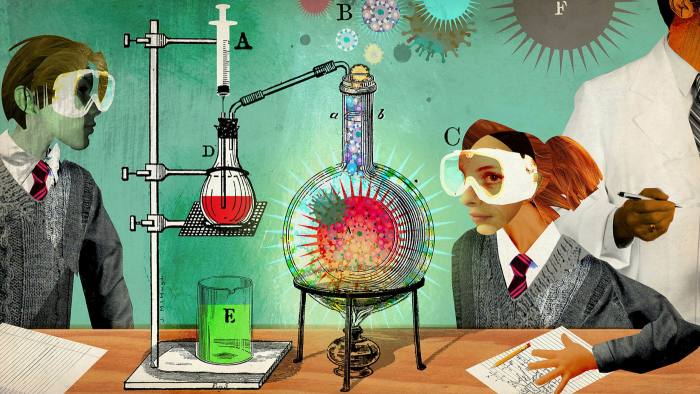This is often now happening in some countries — intentionally , instead of accidentally . Schools in England are reopening even as quite 28,000 new cases were recorded on Thursday. Term time is probably going to spell germ time: in Scotland, where schools opened in mid-August, more under-18s are infected now than at any time within the pandemic. While lateral flow testing is constant in England’s secondary schools, mitigations like masking and bubbles are not any longer prescribed. Isolation requirements when pupils or relations test positive, are loosening.
After education unions aired concerns about poor ventilation, the united kingdom government belatedly promised CO2 monitors to colleges . But it’s yet to offer the green light to vaccinating all 12 to 15-year-olds, despite the Pfizer and now Moderna vaccines having been approved therein age bracket . A generation of children is being keep off into the viral trenches with minimal protection, a situation that verges on the incomprehensible given the supply of safe, effective vaccines and continuing bad news about the risks of natural infection.
Last week brought more chilling dispatches. First, neurologists warned that Covid-19 could fuel an epidemic of dementia, due to long-term brain damage wrought in some patients. Second, a paper within the Journal of the American Society of Nephrology noted that “long Covid” sufferers are at increased risk of kidney damage. Millions may have dialysis for years to return , a costly tragedy for patients and creaking healthcare systems.
Third, scientists reported that one in seven children in England who tested positive were still suffering three or more symptoms, including headache, fatigue and breathlessness, 15 weeks after infection. The landmark study suggests “long Covid” affects between 4,000 and 32,000 children aged between 11 and 17 in England; the larger number equates to nine afflicted pupils in every state lyceum .
Some US states also are dropping mitigations, like masking, in schools, but the country is vaccinating over-12s. the united kingdom seems a world outlier in restoring in-person learning largely without mitigations during high transmission while not vaccinating all 12 to 15-year-olds (except the clinically vulnerable or those with relations at risk).
The Joint Committee on Vaccination and Immunisation, which advises ministers, is true to mention that the choice to immunise under-16s is finely balanced: its analysis is that the advantages marginally outweigh the harms. But its continued reluctance is in contrast with the actions that a lot of other high-income countries, like the US, Israel et al. in Europe, are already undertaking. The committee has previously taken a slower course to an equivalent destination: it recently advocated vaccinating all 16- and 17-year-olds, after months of querying the advantages . Ministerial impatience may have prompted Friday’s announcement that the UK’s four chief medical officers will now examine the immunisation of youngsters aged 12 to fifteen with a broader lens.
True, it’s incredibly rare for youngsters to die of Covid-19. an equivalent might be said of seasonal flu. there have been 25 Covid deaths among under-18s in England between March 2020 and February 2021. For comparison, 30 people aged 19 or under died of seasonal flu in England and Wales during 2019. Seasonal flu is that the subject of a schools-based vaccination programme that recognises children as spreaders — but Covid-19 isn’t , despite being the foremost disruptive global health emergency for a century
the first known risks from the mRNA vaccines (BioNTech/Pfizer and Moderna) are myocarditis and pericarditis, two sorts of heart inflammation, that are mostly seen in younger male adolescents and adults after the second dose. As of August 25 2021 the US Centers for Disease Control has confirmed 798 incidents among a complete of 369m doses of all vaccines given.
One might expect heart specialists to harbour flutters of doubt but the American College of Cardiology is firmly pro-vaccination for all over-12s, stating that “unvaccinated (adolescents) are in danger of not only myocarditis, but also more serious complications which will cause hospitalisation and death”.
There could also be good reasons why the JCVI demurs. Still, delaying child vaccination isn’t risk-free, particularly with the super-transmissible Delta variant. Unchecked spread disrupts learning and eventually reaches the vulnerable, including those with waning immunity from early vaccination.
It also feels dissonant to ascertain vaccines now championed as essential for 16-year-olds but not worth giving 14- and 15-year-olds, particularly if, as a recent Lancet paper implies, they provide some protection against long Covid also as hospitalisation and death.
As Sage adviser Jeremy Farrar argues in our co-authored book Spike: The Virus Vs The People, a choice to not do something remains a choice . The UK’s current strategy is to deny younger adolescents any opportunity to be vaccinated, even with one dose, while expecting them to return, en bloc and unmasked, to poorly ventilated buildings for seven hours each day , five days every week . How transmission will play out is unpredictable but this seems like the officially sanctioned mass infection of schoolchildren with a vaccine-preventable disease If Covid-19 does indeed become a disease of the young, conjuring up new variants that put them et al. at future risk, it’ll be a sorry twist of our own making.






